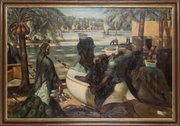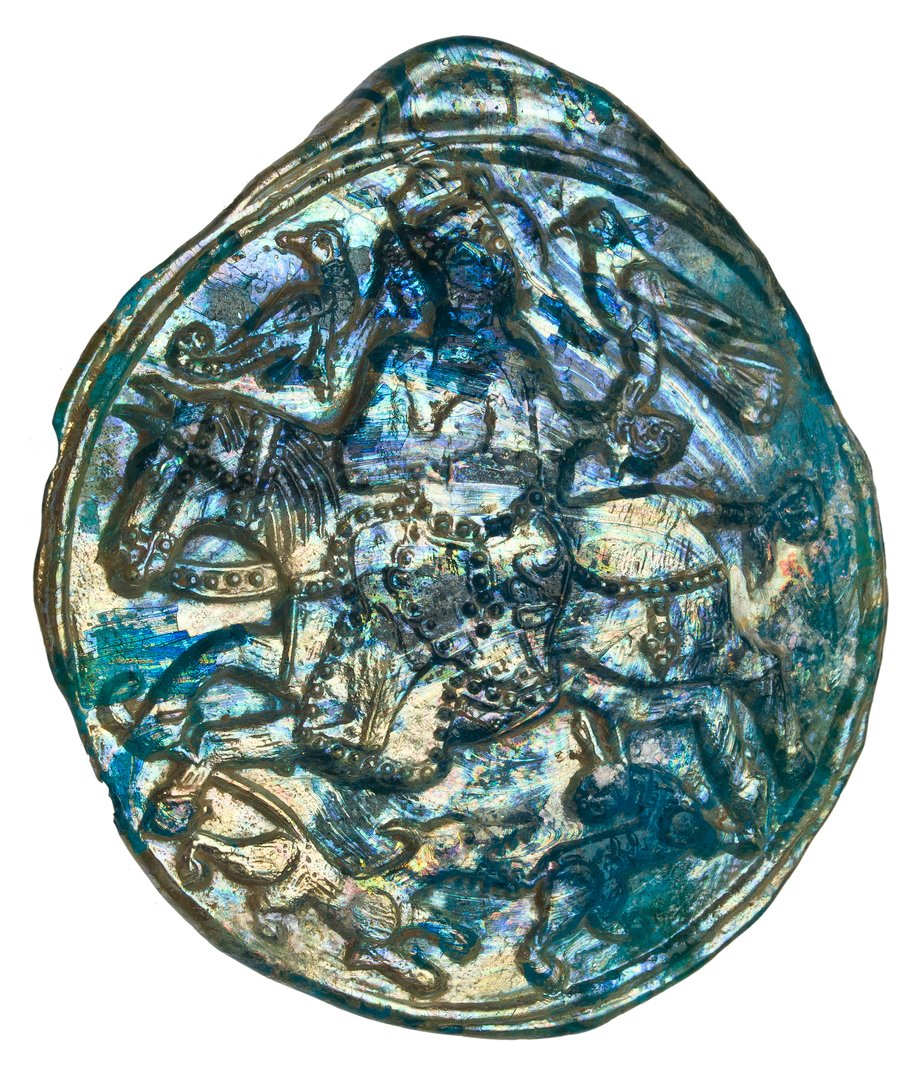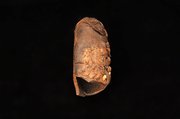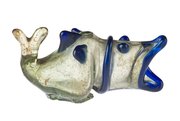
Impressed Glass Medallion
Museum of Islamic Art
- Title:
- Impressed Glass Medallion
- Production place:
- Central Asia
- Date:
- 1100 - 1199
- Period:
- Ghaznavid
- Title:
- Impressed Glass Medallion
- Production place:
- Central Asia
- Date:
- 1100 - 1199
- Period:
- Ghaznavid
- Material:
- Glass
- Technique:
- Stamping
- Dimensions:
- 9.9 × 8.6 × 0.5 cm
This glass plaque bears the figure of a mounted huntsman with a falcon; given the great similarity between this glass object and others surviving examples, it seems that they were impressed with the same stamp or mould. On each plaque, the central hunter, who wears a peaked toque-like hat, a belted caftan, and boots, rides a heavily caparisoned horse depicted in mid-stride. The delicate, pearl-like edgings of clothes, reins, and trappings are marked with dots of glass. Other details are also carefully observed: the feathers on the birds’ wings, the plaiting of the horse’s tail, and the curve of the huntsman’s hand. A falcon is perched on the left hand of the rider, another bird hovers at his right shoulder, and below his mount, a hunting dog, presumably a type of saluki, attacks a leaping hare. Plaques of this type can be dated with some certainty, following the first discovery of a group of glass medallions during excavations of the late 4th or 5th century AH/11th or 12th century CE Ghaznavid palace at Termez (Tirmidh), present-day Uzbekistan. The colours of the excavated plaques range from rich purple and vivid blue, to pale yellow and green. Judging from architectural elements found at the site, it seems probable that these glass medallions may have functioned as decorative elements for windows.



